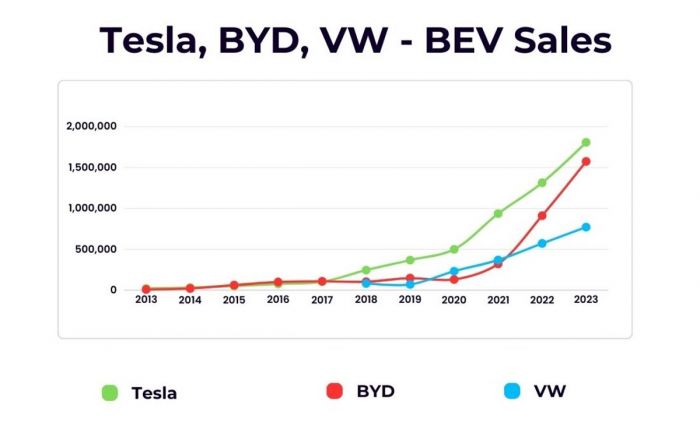Before the popular Silverado was the GMT 400, and many people consider it to be one of the best truck platforms of the 1980s that saw wide use in GM vehicles. Upon its introduction and subsequent redesign in the latter years of that decade, it saw a significant jump in sales, which just shows the public clamor for the pickups using the architecture.
Jumping back to this day, however, the 80s have long been over. So, this begs the question as to whether or not GMT 400 trucks are still a good buy or not. In this article, we will show you the most common problems found in them to help you weigh your options.

Most Common Problems Found in GMT 400 Trucks
As far as durability is concerned, there are still GMT 400 trucks being driven on the road today. Seeing them after their production folded 22 years ago certainly speaks volumes about their durability. However, durability does not strictly equate to reliability. So, to ensure the optimal performance of vehicles with this platform, there are a few common problems that owners should certainly watch out for.
If you are a GMT 400 truck owner or are still planning on buying one, these are the problems that may strike your vehicle:
1. Distributor Issues
This kind of problem is prevalent in a lot of gasoline-fed 1988 to 2002 GM vehicles, and there's a huge chance that you may run into this if you own a GMT 400 truck. The issue can be normally traced back to the distributor cap, rotor, plug, and wire. The purpose of the distributor is to take the electrons from the ignition coil and transfer them to the spark plugs for a combustion reaction to happen.
The most common cause of issues with distributors can range from extreme wear-and-tear, bad connections, or interior components that have failed due to age. In some cases, there may be noticeable issues such as engine stalling and hesitation (flaring), misfiring, stumble, and poor fuel economy. If this does happen, then it's time to perform some manual checks before anything else
While performing these tests, you should check for any cracks or damage on both parts of the distributor cap as well as its rotor contact area. If you can, remove the cap and check for any carbon tracking or moisture inside.
If either one of these is present, then it's time to look into replacing both parts. As a precautionary measure, you should also check all the spark plug wires by ensuring that they are securely connected and free from any damage.
If the issue persists after visual inspection, there are tools available in the market that can help diagnose with pinpoint accuracy. For example, an ohm meter can be used on the distributor itself as well as its corresponding plug wire to ensure that no current is being lost through them. If this does happen then either or both parts have failed and need to be replaced.
To fix this issue, there are a few parts that need to be purchased. First and foremost, you should replace the distributor cap and rotor as these are essential components in your truck's ignition system.
You can also look into buying new spark plug wires with high-quality insulation, so they last longer and won't fail prematurely. Finally, if all else fails, then go for a new ignition coil or distributor assembly as this should solve any remaining issues you may have.
All in all, preventing any kind of issue with your GMT 400 truck's distributor is key to maintaining optimal engine performance. If any type of symptom does pop up then it's best practice to check both visual aspects and use proper tools to identify the root of the problem. And if the issue does persist after this, then replace all necessary parts for a complete solution.
2. Faulty Fuel Pump
The fuel pump on GMT 400 trucks is responsible for supplying the engine with the necessary amount of fuel to operate. But when it fails, certain issues arise that must be addressed to keep the vehicle running properly. The common reasons for a faulty fuel pump include wear and tear due to its mechanical parts, insufficient voltage reaching the pump, or contamination of the inside components.
When a fuel pump fails, it can cause symptoms such as difficulty starting, reduced power output while driving, sputtering at high RPMs, and dimming lights from weak electrical current. To analyze the problem correctly, you should check for any loose connections or wires near the fuel pump area, inspect all relays and fuses, test for correct voltage levels, and check the fuel pressure at the rail.
The solution to a faulty fuel pump in GMT 400 trucks is usually to replace it with a new one. Other parts that may need replacement or cleaning include the fuel filter, fuel pressure regulator, and fuel injectors.
In some cases, you may also need to replace the relay switch and wiring harness. To keep your vehicle running great, be sure to use only original manufacturer parts when possible and follow all safety precautions while performing repairs.
3. ABS Module Malfunction
With the age of the GMT 400 trucks, one can expect some of its original electrical components to finally reach the end of their lives. One of them is the anti-lock braking system (ABS) control module. Now, when looking at the various angles of the problem, you should also check for possible issues in the wiring.
The most common causes of an ABS module malfunction in GMT 400 trucks are corrosion, water damage, and a broken or aged electrical connection. The corrosion might be due to moisture in the wiring harness. Water damage will most likely come from its exposure to the elements over time. A broken electrical connection is possible due to constant vibrations that can loosen connections over time.
When the ABS module malfunctions, it will affect the performance of your truck's brakes. Symptoms include inconsistent braking power, pulsing when braking at higher speeds, and increased stopping distance as you have less control over your vehicle's stopping power under emergency situations. Diagnosing this problem correctly requires specialized diagnostic tools that connect directly to the ABS module.
The way around this problem requires replacing the ABS module and its associated wiring components. This will require some special tools, so it is best to take your truck to a qualified mechanic if you are not confident in performing the repair yourself.
The new ABS control module should be compatible with your GMT 400 truck and should also come with instructions for installation. It's recommended that you use original manufacturer parts, as they are more likely to fit properly and last much longer than aftermarket options.
Once all of these repairs have been made, the ABS should work correctly again, restoring full braking power and stopping distance performance back to normal levels. With this understanding of the purpose of the ABS control module in GMT 400 trucks, and the most common causes and solutions for an ABS module malfunction, you should now be better equipped to properly maintain your truck's braking system.
4. ECM Errors
Lastly, you should pay attention to the symptoms of possible issues coming from the original engine control module (ECM) of classic GMT 400 trucks. This is an essential part of the vehicle's functionality, and it works by controlling and monitoring engine performance, emission systems, fuel delivery, as well as other operations related to drivability.
The ECM regulates these functions via signals sent from various sensors located throughout the truck. Without the proper functioning of the ECM, a variety of issues can occur and drastically limit the powertrain's capabilities.
When it comes to problems regarding the ECM for GMT 400 trucks, some common issues include faulty wiring harness connectors, corroded switches or terminals, loose grounds, bad solenoids, and relays that produce false data signals. Malfunctions may also be caused by incorrect software calibration, a defective ECM, or damaged locks and seals.
If the ECM is malfunctioning, you may experience longer cranking times when starting the engine, poor fuel economy, and an increase in emissions from your vehicle. As well as issues with the transmission shift points, engine stalling at idle or during acceleration, as well as random misfires due to irregular ignition timing.
It's also possible that there could be trouble codes triggered by malfunctions such as P0300 (random/multiple cylinder misfire detected) and/or P0121 (Throttle Position Sensor/Switch A Circuit Range Performance).
To accurately diagnose any problems with the ECM for GMT 400 trucks, it's important to use a digital multimeter to check the voltage coming from the sensors, or use an OBD-II scanner to retrieve any trouble codes stored in the ECM's memory. If faulty wiring is responsible for the issue, replacing corroded connectors, bad switches or terminals, and old grounds can help.
You may also need to replace other components such as relays and solenoids that are malfunctioning. In some cases, you may need to get your truck's software reflashed if it's already obsolete. If all else fails, then consider replacing the defective ECM with a new one.
If you experience any of these issues with your GMT 400 truck's ECM, be sure to address them immediately as they can cause further damage to your vehicle and create a potential safety hazard. Taking preventative measures by regularly conducting inspections, testing the voltage signals with a multimeter, and making sure that all software is up to date should help keep your ECM in good condition.
Conclusion
GMT 400 trucks are certainly a good investment if you're looking for a classic vehicle that can still deliver the right amount of performance and reliability.
To ensure that your GMT 400 truck runs smoothly and efficiently, you must take into account the common problems mentioned here and have them fixed as early as possible. Doing so will help keep your GMT 400 truck running strong for years to come.
About the authors
The CarAraC research team is composed of seasoned auto mechanics and automotive industry professionals, including individuals with advanced degrees and certifications in their field. Our team members boast prestigious credentials, reflecting their extensive knowledge and skills. These qualifications include: IMI: Institute of the Motor Industry, ASE-Certified Master Automobile Technicians; Coventry University, Graduate of MA in Automotive Journalism; Politecnico di Torino, Italy, MS Automotive Engineering; Ss. Cyril and Methodius University in Skopje, Mechanical University in Skopje; TOC Automotive College; DHA Suffa University, Department of Mechanical Engineering






Add comment